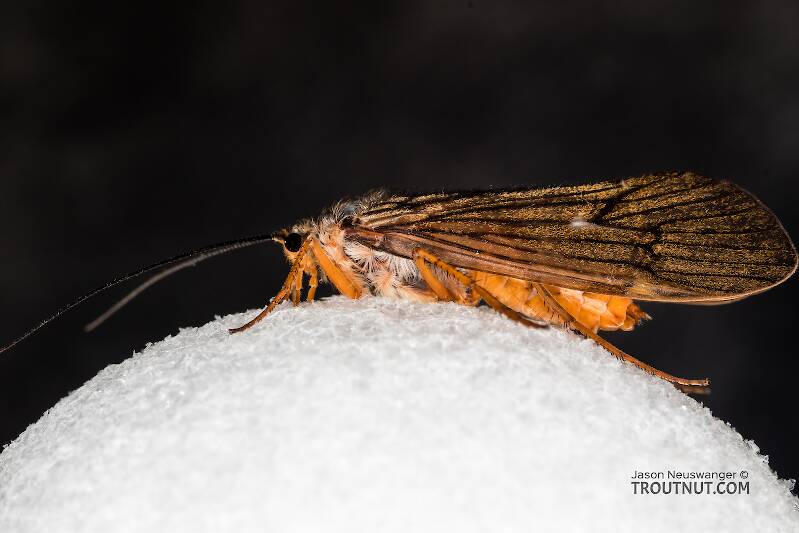
Blue-winged Olives
Baetis
Tiny Baetis mayflies are perhaps the most commonly encountered and imitated by anglers on all American trout streams due to their great abundance, widespread distribution, and trout-friendly emergence habits.
Featured on the forum

This specimen keys pretty easily to Onocosmoecus, and it closely resembles a specimen from Alaska which caddis expert Dave Ruiter recognized as this genus. As with that specimen, the only species in the genus documented in this area is Onocosmoecus unicolor, but Dave suggested for that specimen that there might be multiple not-yet-distinguished species under the unicolor umbrella and it would be best to stick with the genus-level ID. I'm doing the same for this one.

Troutnut is a project started in 2003 by salmonid ecologist Jason "Troutnut" Neuswanger to help anglers and
fly tyers unabashedly embrace the entomological side of the sport. Learn more about Troutnut or
support the project for an enhanced experience here.
This topic is about the Insect Order Trichoptera
Some say caddisflies are even more important than mayflies, and they are probably right. The angling world has taken a while to come to terms with this blasphemy. Caddis imitations are close to receiving their fare share of time on the end of the tippet, but too many anglers still assume all caddisflies are pretty much the same.Caddis species actually provide as much incentive to learn their specifics as the mayflies do. There is just as much variety in their emergence and egg-laying behaviors, and as many patterns and techniques are needed to match them. Anglers are hampered only by the relative lack of information about caddisfly behavior and identification.
Example specimens
Troutnabout
Posts: 20
Posts: 20
Troutnabout on Oct 29, 2006October 29th, 2006, 11:50 am EST
Do caddis fall spent on the water after egg laying or mating? What do they look like,where in the river do they fall?
Troutnut on Oct 29, 2006October 29th, 2006, 12:06 pm EST
Some do. It depends on their egg-laying behavior. Also, even the species which do fall spent usually won't do it every time you see them egg-laying or mating; unlike mayflies, many caddisflies can go at it again a few times.
The species which dive underwater to lay their eggs are probably less likely to fall spent, although I've read that they can make multiple dives, so maybe they can expire in the air, too.
Sorry I don't have a really definitive answer to your question. I also don't have a picture of one that's actually spent, but they spread out their wings kind of like a mayfly spinner and I have a live one in a similar pose to give you a bit of an idea:
http://www.troutnut.com/fullsize/picture-im_regspec/2650
Hope this helps. :)
The species which dive underwater to lay their eggs are probably less likely to fall spent, although I've read that they can make multiple dives, so maybe they can expire in the air, too.
Sorry I don't have a really definitive answer to your question. I also don't have a picture of one that's actually spent, but they spread out their wings kind of like a mayfly spinner and I have a live one in a similar pose to give you a bit of an idea:
http://www.troutnut.com/fullsize/picture-im_regspec/2650
Hope this helps. :)
Jason Neuswanger, Ph.D.
Troutnut and salmonid ecologist
Troutnut and salmonid ecologist
Troutnabout
Posts: 20
Posts: 20
Troutnabout on Oct 29, 2006October 29th, 2006, 3:16 pm EST
Thanks Jason it does help.i always thought spent flies would be mayflies.
Quick Reply
Related Discussions
Topic
Replies
Last Reply
8
Jan 7, 2009
by Dgracia
by Dgracia
6
Aug 21, 2010
by Gutcutter
by Gutcutter
6
Nov 16, 2015
by PaulRoberts
by PaulRoberts
9
Apr 29, 2009
by Taxon
by Taxon





